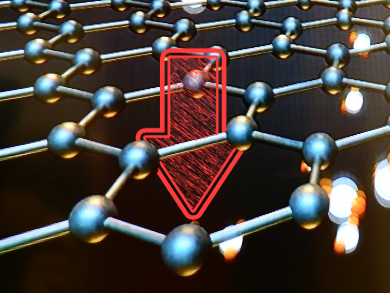Graphene has a remarkable mechanical strength and can be prepared in a scalable manner using chemical vapor deposition (CVD). The material has prospective applications in membrane technologies that require high selectivity and permeability. However, experimental studies are mostly limited to the movement of protons, ions, and water molecules through graphene. Results for the passage of larger molecules through graphene are rare.
Tao Zhang and Rainer Jordan, Technical University of Dresden, Germany, Tao Chen, Ningbo Institute of Material Technology and Engineering, Chinese Academy of Sciences, and colleagues have found that vinyl monomers can pass through a pristine CVD graphene monolayer. The team used a controlled radical polymerization reaction, with the radical initiator bonded to the opposite side of the graphene membrane, to apply a driving force for the movement. The polymer then forms after the passage of the monomers through the membrane.
The researchers found that various neutral monomers (e.g., methyl methacrylate) can smoothly pass through graphene, although the number of defects in the graphene layer was increased after the passage. The passage of anionic and cationic monomers, in contrast, is significantly obstructed due to the interactions between charged molecules and graphene defect edges. Anionic monomers can even be used to cut the graphene sheet into defined microscopic structures when the radical initiator is applied to the graphene in the desired pattern.
- Polymerization driven monomer passage through monolayer chemical vapour deposition graphene,
Tao Zhang, Zhongquan Liao, Leonardo Medrano Sandonas, Arezoo Dianat, Xiaoling Liu, Peng Xiao, Ihsan Amin, Rafael Gutierrez, Tao Chen, Ehrenfried Zschech, Gianaurelio Cuniberti, Rainer Jordan,
Nat. Commun. 2018.
https://doi.org/10.1038/s41467-018-06599-y




